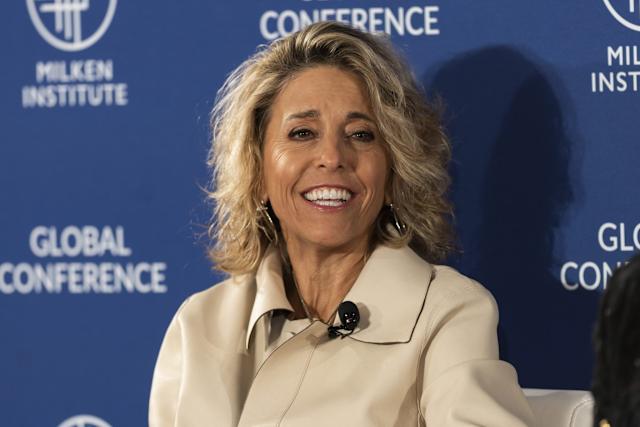The dream of owning a home has become increasingly elusive for Generation Z, as soaring home prices, rising interest rates, and tight inventory make buying a first property seem nearly impossible. But according to Pamela Liebman, CEO of Corcoran Group, today’s challenges mirror what Baby Boomers faced three decades ago.
In a candid interview, Liebman offered advice with a touch of humor and financial pragmatism: she suggested that younger buyers should reconsider small daily expenses, famously noting, “Stop buying Starbucks coffee.” While controversial, her comments sparked a wider discussion about the financial choices and structural barriers shaping Gen Z’s housing prospects.
Gen Z’s Housing Market Struggles
Data confirms that younger Americans are facing a formidable entry barrier into the housing market:
- Median home prices have surged by more than 70% in the past decade, far outpacing wage growth.
- Mortgage rates recently climbed above 7%, adding hundreds of dollars to monthly payments compared to a few years ago.
- Inventory shortages mean homes sell within days, often above asking price, creating fierce competition.
- Student debt burdens compound the challenge, limiting down payment capacity.
For many Gen Z buyers, this combination makes homeownership a distant dream, forcing them to rent longer and save aggressively.
Lessons From the Boomer Era
Liebman drew a direct line between Gen Z’s difficulties and those experienced by Baby Boomers in the late 1980s and early 1990s:
- Boomers faced inflation-adjusted home price increases and rising interest rates.
- Many had to tighten discretionary spending to save for a down payment.
- The workforce was less mobile, yet the pressure to own a home was equally intense.
“People always think their generation’s challenges are unique,” Liebman said. “But Boomers went through the same squeeze—you just hear less about it now.”
Her perspective reframes the narrative: while today’s market may feel unprecedented, cyclical economic pressures and credit constraints are recurring themes in housing history.
The Starbucks Analogy
The CEO’s advice to cut small discretionary spending quickly grabbed headlines:
“Stop buying Starbucks coffee,” Liebman said.
“If you’re serious about saving for a down payment, small daily luxuries add up over months and years.”
While some critics dismissed this as overly simplistic, financial planners argue there is truth in the principle: small, consistent savings can accumulate, supplementing Gen Z’s ability to cover down payments, closing costs, and other home-buying expenses.
- A $5 daily coffee habit adds up to $1,825 per year.
- If invested in a savings account with modest interest, it could grow to over $10,000 in five years.
- Redirecting discretionary spending toward down payments could help overcome liquidity barriers.
However, experts emphasize that cutting coffee alone is not a solution to structural issues, such as low housing supply and high student debt.
Structural Barriers Gen Z Faces
While discretionary spending adjustments can help, analysts note that market-wide forces remain the primary obstacles:
- Housing Shortage: Limited supply of starter homes drives prices up.
- Rising Construction Costs: Labor and materials inflation slow new home development.
- Student Debt: Average debt for recent graduates exceeds $30,000.
- High Rent Costs: Longer rental periods delay the accumulation of down payment savings.
- Interest Rate Volatility: Variable rates amplify uncertainty for first-time buyers.
These systemic barriers mean policy interventions and innovative financing options are often necessary for Gen Z to achieve homeownership at scale.
Practical Advice Beyond Coffee Cuts
Liebman also suggested broader strategies for first-time buyers:
- Consider alternative locations: Look outside urban cores where prices are lower.
- Increase income streams: Side gigs or remote work can boost savings.
- Leverage first-time buyer programs: FHA loans and state-level assistance can reduce initial costs.
- Save aggressively: Automate savings into dedicated accounts.
- Monitor credit scores: Better credit reduces interest rates and monthly payments.
These strategies emphasize a combination of discipline and smart financial planning, not just cutting luxuries.
Market Outlook
Despite challenges, there are signs of hope for Gen Z buyers:
- Some regions are experiencing modest price corrections as mortgage rates remain high.
- New home construction is gradually increasing, particularly in suburban and secondary markets.
- Financial institutions are rolling out flexible mortgage products tailored for first-time buyers.
However, experts caution that homeownership remains a multi-year goal for most Gen Zers, requiring both strategic saving and market timing.
Conclusion
Pamela Liebman’s comments remind us that housing challenges are not unique to any generation. While today’s Gen Z faces unprecedented financial pressures, lessons from the past—including discipline, financial planning, and smart investment choices—still hold relevance.
Her “Starbucks coffee” analogy underscores a key point: small sacrifices, consistently applied, can meaningfully impact long-term goals. But it is equally important to recognize that structural market issues must be addressed to ensure young Americans can realistically achieve the dream of homeownership.
The debate sparked by Liebman highlights a central tension in today’s housing market: balancing personal financial responsibility with systemic reform to make homes accessible to a new generation.
















